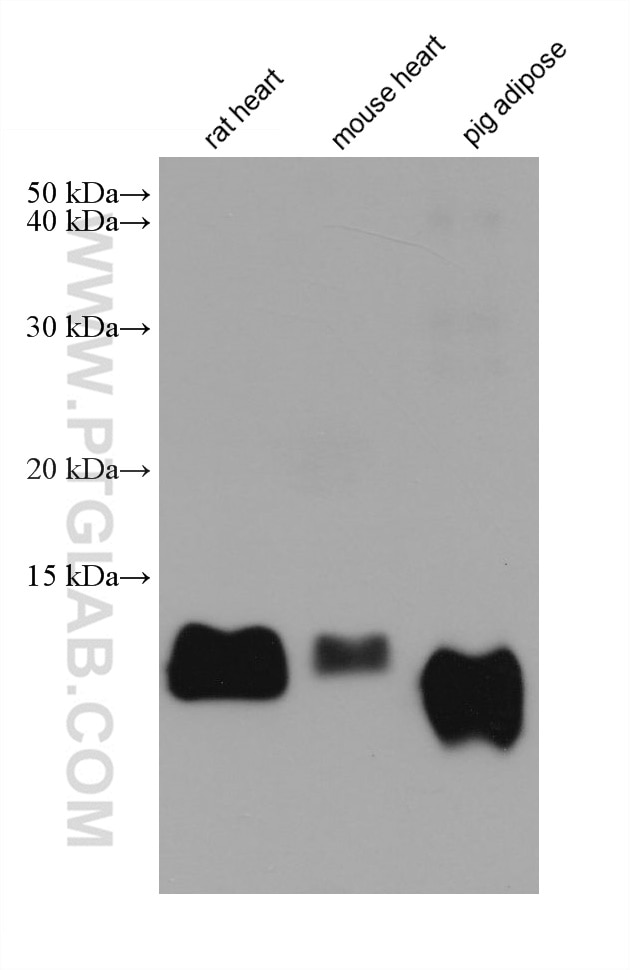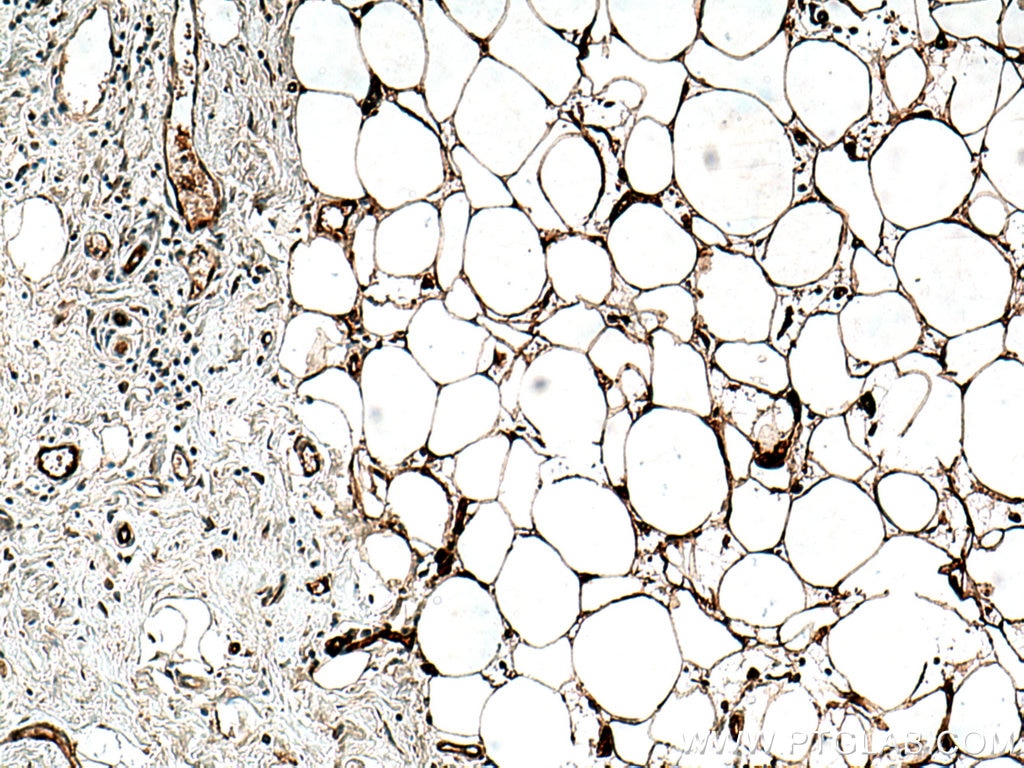Product Information
67167-1-PBS targets FABP4 in WB, IHC, Indirect ELISA applications and shows reactivity with Human, mouse, rat, pig samples.
| Tested Reactivity | Human, mouse, rat, pig |
| Host / Isotype | Mouse / IgG2b |
| Class | Monoclonal |
| Type | Antibody |
| Immunogen |
CatNo: Ag8565 Product name: Recombinant human FABP4 protein Source: e coli.-derived, PET28a Tag: 6*His Domain: 6-132 aa of BC003672 Sequence: VGTWKLVSSENFDDYMKEVGVGFATRKVAGMAKPNMIISVNGDVITIKSESTFKNTEISFILGQEFDEVTADDRKVKSTITLDGGVLVHVQKWDGKSTTIKRKREDDKLVVECVMKGVTSTRVYERA Predict reactive species |
| Full Name | fatty acid binding protein 4, adipocyte |
| Calculated Molecular Weight | 132 aa, 15 kDa |
| Observed Molecular Weight | 14 kDa |
| GenBank Accession Number | BC003672 |
| Gene Symbol | FABP4 |
| Gene ID (NCBI) | 2167 |
| RRID | AB_2882463 |
| Conjugate | Unconjugated |
| Form | Liquid |
| Purification Method | Protein A purification |
| UNIPROT ID | P15090 |
| Storage Buffer | PBS only, pH 7.3. |
| Storage Conditions | Store at -80°C. |
Background Information
Fatty acid binding protein (FABP) 4 is a member of the FABP family which abundantly expressed, fatty acid carrier proteins. FABPs are capable of binding a variety of hydrophobic molecules such as long-chain fatty acids and are important for their uptake and intracellular trafficking. It was first identified as an adipocyte-specific protein, important for the maintenance of lipid and glucose metabolism. It is also detected in macrophages, where it participates in regulating inflammation and cholesterol trafficking via NFκB and PPAR. In more recent studies, FABP4 has been found in a variety of endothelial cells, where it has been identified as a target of VEGF and a regulator of cell proliferation and possibly angiogenesis. Pathologically, FABP4 has been associated with the development of metabolic syndrome, diabetes and cancer and vulnerability of atherosclerotic plaques. FABP4 has been identified as a novel prognostic factor for both adverse cardiovascular events and breast cancer.






